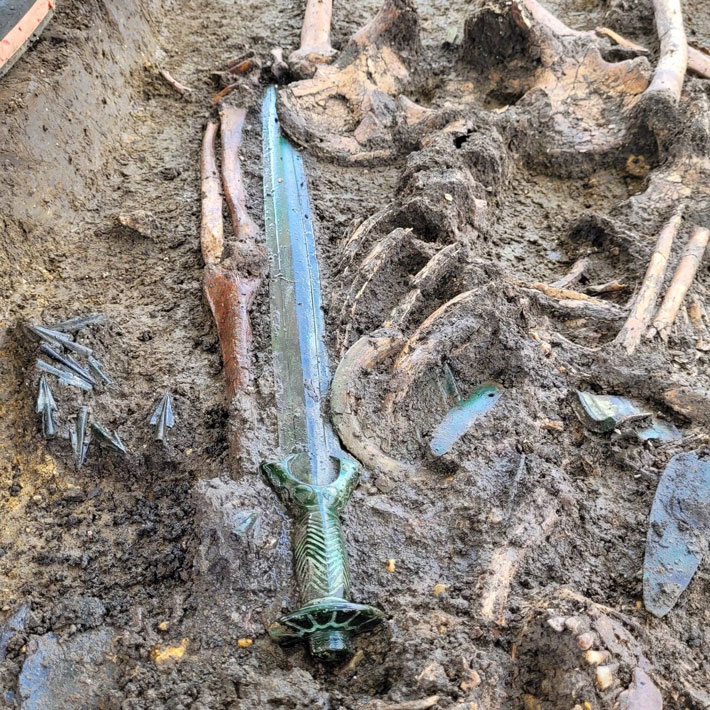 NÖRDLIINGEN, GERMANY—Live Science reports that a Bronze Age grave holding the remains of a man, woman, and boy, in addition to a well-preserved bronze sword and other items made of bronze, has been discovered in southern Germany. The burial dates to the late fourteenth century B.C. The three occupants of the grave are thought to have been buried in quick succession, but it is unclear if they are related to one another. Researchers from the Bavarian State Office for the Preservation of Monuments (BLfD) said that the sword has an octagonal hilt, which now has a greenish tinge from its copper content. The hilt had been cast on to the blade and held with two rivets using a highly skillful technique known as overlay casting. The well-preserved sword could have been used as a weapon, although it does not bear any visible signs of wear. Similar swords are known to have been made in southern and northern Germany and Denmark. “The sword and the burial still have to be examined so that our archaeologists can classify this find more precisely,” concluded BLfD curator Mathias Pfeil. To read about a cache of Bronze Age objects deposited in a well, go to "German Wishing Well."
NÖRDLIINGEN, GERMANY—Live Science reports that a Bronze Age grave holding the remains of a man, woman, and boy, in addition to a well-preserved bronze sword and other items made of bronze, has been discovered in southern Germany. The burial dates to the late fourteenth century B.C. The three occupants of the grave are thought to have been buried in quick succession, but it is unclear if they are related to one another. Researchers from the Bavarian State Office for the Preservation of Monuments (BLfD) said that the sword has an octagonal hilt, which now has a greenish tinge from its copper content. The hilt had been cast on to the blade and held with two rivets using a highly skillful technique known as overlay casting. The well-preserved sword could have been used as a weapon, although it does not bear any visible signs of wear. Similar swords are known to have been made in southern and northern Germany and Denmark. “The sword and the burial still have to be examined so that our archaeologists can classify this find more precisely,” concluded BLfD curator Mathias Pfeil. To read about a cache of Bronze Age objects deposited in a well, go to "German Wishing Well."
Well-Preserved Bronze Age Sword Discovered in Germany
